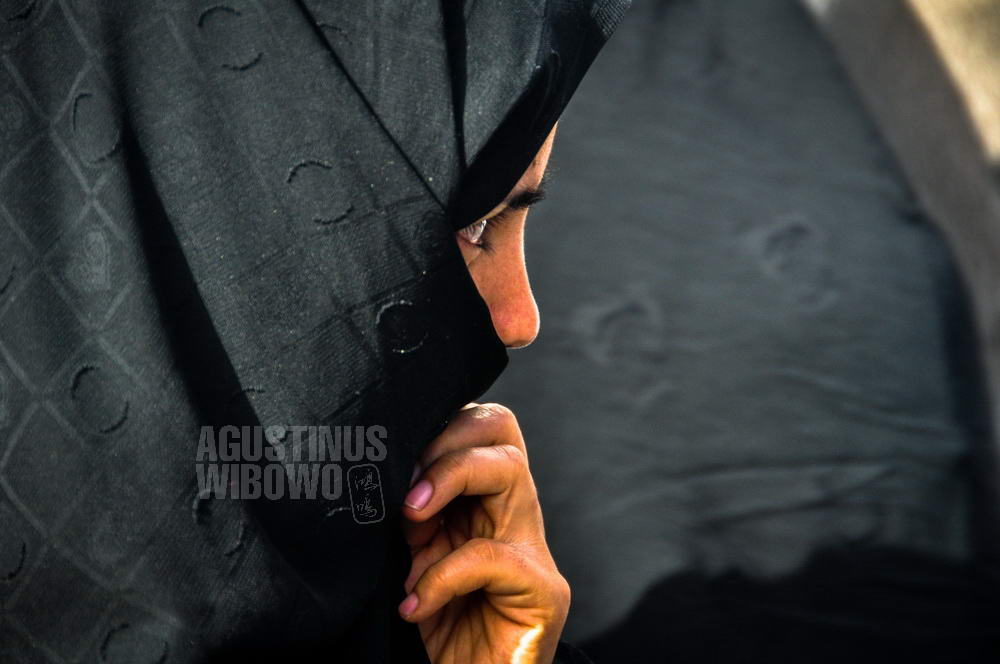
Chador is the traditional full-body-length open cloak, mostly black or light colored, worn by many Iranian women in public spaces. In ancient Persia, the custom of veiling was reserved for respectable women, while servants and prostitutes were forbidden to do so. In 1936 the Pahlavi Shah ruler banned the chador and hijab, as he considered women veil is incompatible with his modernizing ambition. The decision faced resistance from the religious and traditional groups, but was welcomed by the Westernized and upper-class city dwellers. After the Islamic Revolution 1979, the new government enforced the wearing of headscarf for women, and chador was extremely popular in the first years after the Revolution. It’s not compulsory for Iranian women for wearing chador, but for those who choose wearing it you can guess that they are wearing it for religious piety, expressing her political statement, or coming from family background with strong religious or tradition values.
Mashhad, Iran, 2009

